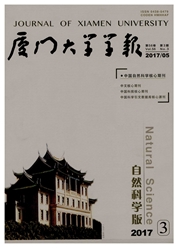

 中文摘要:
中文摘要:
生物多样性是人类生存的基础,而自然保护区是生物多样性保护的重要方式,建立合理的生物多样性测度体系是自然保护区建设的重要方面.自然保护区的生物多样性包括三个方面:容量、通量和质量,它们从不同的侧面测度自然保护区的生物多样性.容量指自然保护区内生态系统类型、物种数的绝对多度和相对多度.物种丰富度是衡量生物多样性容量的较好的指标.通量是指不同自然保护区之间在生态系统类型或物种组成上的相似性与连通性,可以采用β多样性来衡量,如Cody指数和Li指数.当保护区之间的通量值较低时,需要进行整体插值,建立新的保护区.质量指自然保护区的保护对象的价值、特色与脆弱性,可以采用Li质量指数来测度.最后,讨论了基于生物多样性容量、通量和质量的保护区群网规划,认为通过保护区群网的建设,可以有效地保护更多的生物多样性.
 英文摘要:
英文摘要:
The biodiversity is the foundation of human surivial,and the nature reserve is an important way to protect biodiversity.It is an important aspect to build reasonable biodiversity measure system.The biodiversity of nature reserve includes three aspects:the capcity,flux and quality,which can measure nature reserve′s biodiversity form different side.The capacity refers to the absolute and relative diversity of ecosystem types and species in a nature reserve.The species abundance is one good index for weighs the biodiversity capacities.The flux is refers to the similarity and connectivity of ecosystem types or species composition between two adjacent nature reserves.The flux can be estimated by β diversity index which is calculated from the Cody index and the Li index.When the flux,which reveals the conductivity of two adjacent nature reserves,exhibits a low value,a new nature reserves should be established by overall interpolation.The quality may be estimated by Li quality index(QL).Eventually,biodiversity would be more effective protected through the construction of a well cooperated protectorate network.
 同期刊论文项目
同期刊论文项目
 同项目期刊论文
同项目期刊论文
 期刊信息
期刊信息
